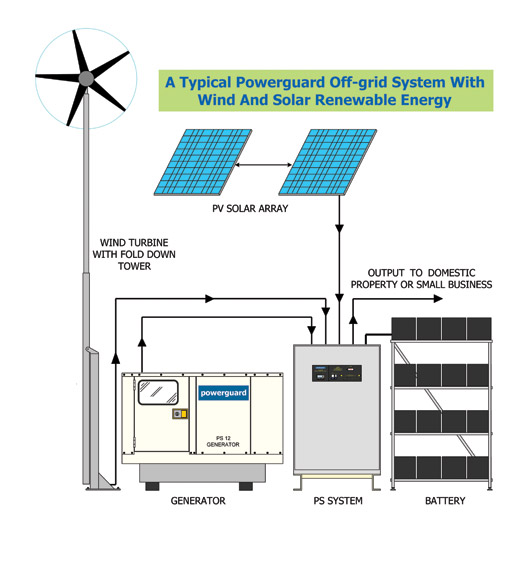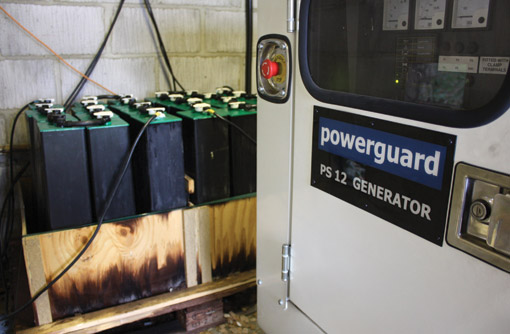Remote power without the fuel consumption

Getting remote buildings connected to the National Grid can be a frustrating and expensive process, so many businesses opt for generator power instead.
But a genset running 24 hours a day can burn a serious amount of fuel and it’s unlikely all its output will be required all the time.
To tackle this many makers offer auto-start, power-on-demand control systems but even with these power isn’t necessarily used in the most efficient way possible.
For example, a refrigeration plant or compressor may only use a proportion of a generator’s total output but the engine needs to be running at rated speed to produce the required voltage and current. Consequently, unless it’s under full-load, the powerpack is rarely being used to its full potential and fuel is wasted as a result.
How do you counter this problem?
Adding a battery bank is one way to smooth out your electricity demand but of course that requires inverters and chargers (along with the inherent associated power losses) plus some clever control systems.
One company that offers such a set-up is Lincolnshire-based Powerguard. However, it says its “off-grid” power system is more intelligent than any other set-up on the market.
As well as being able to generate and store electricity for when it is required, it can manage supplies from other power sources such as wind turbines or banks of PV solar panels.

How does it work?
There are four main components of the system (see diagram). The basic principle is that the battery bank provides power on a low-level basis and then, as electricity demands fluctuate through the day and night, the generator tops up the system.
Throughout that 24-hour period the turbine or panels will also produce varying amounts of power, effectively acting as trickle-chargers to the batteries.
Low-level electricity usage means the 48V DC feed from the batteries runs through the inverter to provide a 240V AC supply.
When there is a heavier demand, the generator kicks in and any surplus power is then used to top up the batteries again.
This is said to have two big advantages. Firstly it stops the batteries discharging below 50% – a big factor in extending their life.
Secondly, because the generator is being used to its full capacity in its most efficient load band, fuel use is optimised.
Diesel-powered generators are generally less efficient when they are running under light load. As an example, a 12kVA genset will use 30-50% more fuel per kW produced at 25% load than when it is working under full load.
Long periods of light load running can also cause issues with soot build-up and so forth.
In addition, because the generator isn’t needed every time there is a requirement for power in the building, its runtime is cut by more than two-thirds, according to Powerguard. That has obvious implications for its life and servicing costs.
Adding a 1kW wind turbine into the mix – at a cost of around £3,000 – is believed to cut the annual fuel bill by about one-third.
To balance out the strong winter winds with summertime sun, an array of 12 250Wp PV panels would provide about 45% of the battery charge during the summer months and about 20% during the winter months. Including installation, that’s likely to add about £6,000.

Costings
- The cost of running a standard Powerguard system without a renewable energy source is about 25p/kWh with red diesel at 72p/litre (about a third of the cost of running a generator without intelligent controls where light load running increases the hourly cost).
- A solar PV array using 12 high quality 250Wp panels would average about 132 Ah/day averaged over the year. This provides about 33% of the power and would reduce the cost per unit to about 16p/kWh.
- A 1kW wind turbine (as used at Wrackleford) would average about 160 Ah/day averaged over the year. This provides about 40% of the power and would reduce the cost per unit to about 15p/kWh.
- Together the PV array and turbine would produce 292 Ah/day averaged over the year, about 70% of the power requirement, cutting the cost per unit from 25 pence to about 7.5p/kWh.

